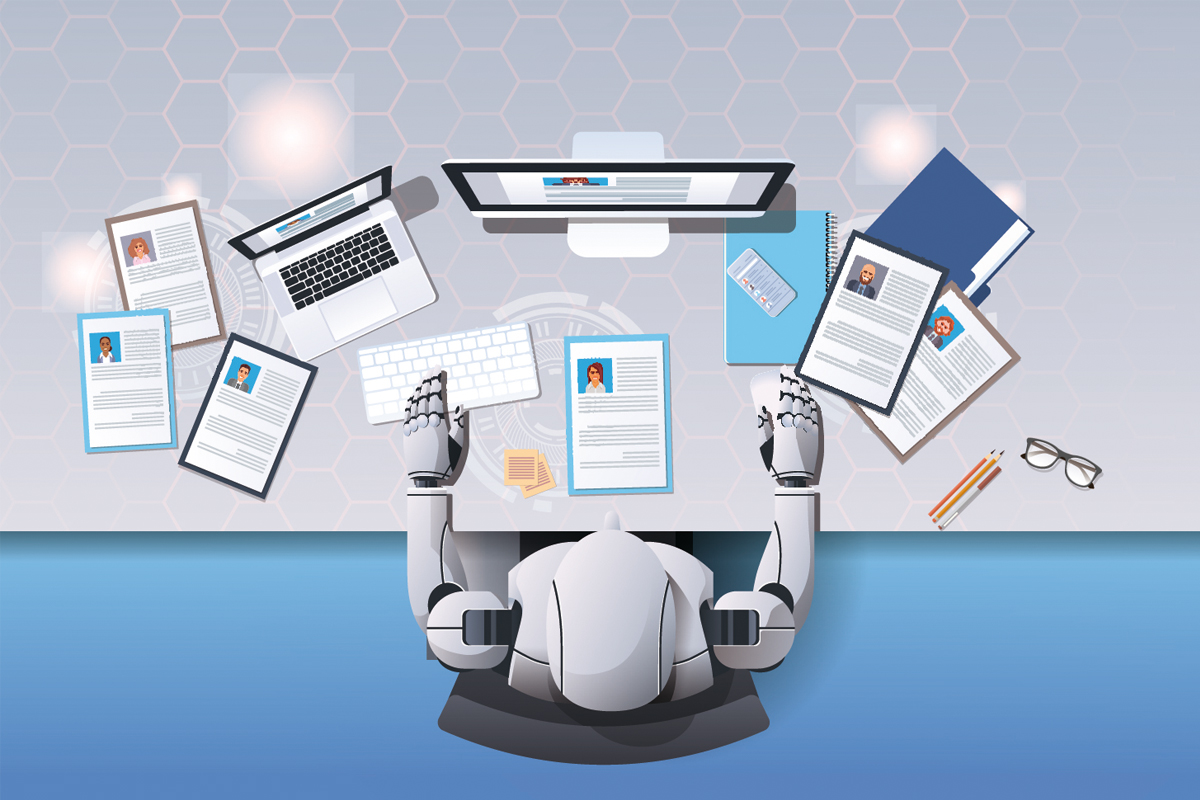A few years from now, you could be responding to a job posting that has been optimised by a bot, have your resume shortlisted by another, be interviewed by yet another and then be inducted into your new office by another. Till you meet your boss (who hopefully isn’t a machine) for the final round of interview, you may have minimal to zero human interaction, so ‘caught in traffic’ excuses may not fly anymore. Hiring and talent management processes are getting artificial intelligence (AI) driven technologies. We are already seeing the beginning of this.
When was the last time you called up a recruitment agency to circulate your resume? Many people now simply post that they are ‘looking to move/for a change of job’ on their social media JobBoard profile or respond to ads that keep popping up on the platform. Therefore, there is an increasing disintermediation in hiring. If you want a job, you can reach out to the HR or higher ups in any organisation through their JobBoard accounts.
Then there is blockchain. You must wonder how this ‘cryptocurrency tech’ is relevant to the human resources (HR) officer. Well, it’s because the tech essentially is a ledger that keeps immutable data — the data itself, who made the entry, from where and when, and so on — from various locations So, if you are a recruiter and your C-suite candidate claims that s/he was building houses for the poor in remote places during a year-long sabbatical or was waiting tables across South America to expand his/her mind, then you can verify that information on the ledger from thousands of miles away. A recruiter can skip the tedious, multiple reference checks or hiring an outside agency to check the credentials. Any information entered into the chain has to be confirmed by multiple users, to ensure data authenticity.
At the interview stage, the candidate can be interviewed by an AI-powered voice bot first, that can ask all the relevant questions and gauge the candidate’s emotional responses, through a personalised, chatty conversation. The data gathered from this interaction can be presented in an easy-to-use format to the team head or the CEO. For example, the candidate appears tensed when asked about his team-building skills or happier when offered a raise than when offered perks. It helps the next decision maker find the right role for the candidate, or tailor the job offer to make it more tempting for good talent.
AI will be used for profiling, matchmaking, screening, conducting interviews and skills assessment as well. Today companies can fire employees through AI-powered systems that could bypass the supervisor. The system is such that it can keep track of employee productivity levels, and auto-generate warnings and terminations. Though there are appeal systems in place and supervisors can override the auto-termination process, such practices do raise ethical concerns.
Will machines function with ‘tethics’, or technological ethics? (Tethics is a term believed to have been used in a leading sitcom from a few years ago.) For example, will the AI-powered bots be able to make effective decisions on diversity hiring? Can machines negotiate between two candidates from different backgrounds and histories? Can machines respond with empathy to an employee whose productivity dropped due to an individual or unique tragedy or challenge?
Meanwhile products are being launched in the market every day to speed up and make the process of talent acquisition and management efficient. There are platforms that study language patterns of companies to help them make more compelling job-postings and to help them strengthen their employer brand. Also, today there are recruiting automation platforms that use AI and machine learning (ML) to get candidate-specific insights and offers recommendations to recruiters on how to approach him/her. For example, it estimates the likelihood of the candidate switching jobs and of him/her fitting into the recruiter’s workforce, and even of the market demand for the candidate.
There are chatbots to detect personality traits and proctoring tools for remote, test-supervision, which should have come particularly handy during the pandemic lockdown.
AI tools can conduct diversity searches by digging deeper into candidates’ data and finding, for example, their membership in different social groups. Additionally, there are tools that can help in-house HR teams spot candidates within the organisation to fill a vacancy, detect skill gaps in the workforce and anticipate workforce trends that could affect the business. We also have platforms built for a remote-first world connecting companies and developers—helping companies locate and hire developers from any part of the world, and helping developers build on their coding skills, prepare for interviews and, finally, find a job.
With such solutions coming quickly into the market, we can expect a few changes in the job scene. First, there will be more location-agnostic jobs, then we can expect a decline in soft skills since machines will take time to develop their emotional quotient (or EQ), and ultimately we will see new dimensions of diversity. Diversity will not be restricted to human identities anymore, but there will be diversity among bots such as those that are Unix-based or Linux-based. Also, we will start classifying bots as working bots and managing bots. AI will not just transform HR processes, it will transform the workforce. Just as there are human-supported bots now, there will be AI-powered humans.
Does it seem impossible?
Well, thousands of people in Sweden are already walking around with microchips in their hands to replace keys and cards, and to help them monitor their health. The implants’ health and privacy implications are still contentious, but they are challenging what it means to be smart and human.
Bots that can hire and fire are already here
Talent acquisition and management are getting faster, more thorough and more efficient using AI and ML. But there are ethical concerns

Abhishek Gupta
Abhishek Gupta








